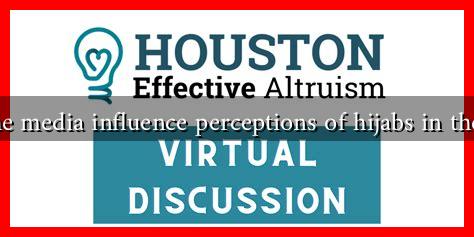-
Table of Contents
How Does the Media Influence Perceptions of Hijabs in the Workplace?
The hijab, a traditional headscarf worn by many Muslim women, has become a focal point of discussion in contemporary society, particularly in the context of the workplace. The media plays a crucial role in shaping public perceptions of the hijab, influencing how it is viewed in professional settings. This article explores the various ways in which media representations affect perceptions of hijabs in the workplace, supported by examples, case studies, and statistics.
The Role of Media in Shaping Perceptions
Media, in its various forms—news outlets, social media, television, and films—has a profound impact on societal attitudes. The portrayal of hijabs in these platforms can either reinforce stereotypes or promote understanding and acceptance. Here are some key ways media influences perceptions:
- Representation: The frequency and context in which hijabs are depicted in media can shape public perception. Positive representations can foster acceptance, while negative portrayals can lead to discrimination.
- Framing: How stories are framed can significantly influence audience interpretation. For instance, framing hijab-wearing women as oppressed can perpetuate stereotypes, while framing them as empowered can challenge those notions.
- Social Media Influence: Platforms like Instagram and Twitter allow hijab-wearing women to share their experiences, creating a counter-narrative to mainstream media portrayals.
Case Studies: Media Representation of Hijabs
Several case studies illustrate the impact of media on perceptions of hijabs in the workplace:
- News Coverage of Hijab Bans: In countries like France, media coverage of hijab bans in public spaces has often focused on the narrative of liberation versus oppression. This framing can influence public opinion, leading to polarized views on hijab-wearing women in professional environments.
- Television and Film: Shows like “Ramy” and “Little Mosque on the Prairie” have portrayed hijab-wearing characters in diverse roles, challenging stereotypes and promoting a more nuanced understanding of Muslim women in the workplace.
- Social Media Campaigns: Hashtags like #HijabDay and #MuslimWomenSpeak have gained traction, allowing hijab-wearing women to share their stories and experiences, thereby reshaping public perceptions.
Statistics on Perceptions of Hijabs
Research indicates that media representations significantly influence public perceptions of hijabs:
- A study by the Pew Research Center found that 62% of Americans believe that Muslim women who wear hijabs face discrimination in the workplace.
- According to a report by the Institute for Social Policy and Understanding, 48% of Muslim women reported experiencing discrimination due to their hijab in professional settings.
- Conversely, a survey conducted by the Muslim Women’s Network UK revealed that 70% of respondents felt that positive media representation of hijab-wearing women could improve workplace acceptance.
The Impact of Positive Media Representation
Positive media representation can lead to greater acceptance of hijabs in the workplace. When hijab-wearing women are portrayed as competent professionals, it challenges existing stereotypes and promotes inclusivity. Some notable examples include:
- Corporate Campaigns: Companies like Nike have launched campaigns featuring hijab-wearing athletes, showcasing their skills and breaking down barriers in sports and fitness.
- Influential Figures: Public figures like Ilhan Omar and Ibtihaj Muhammad have used their platforms to advocate for hijab acceptance, influencing perceptions in both media and society.
Conclusion: The Path Forward
The media’s influence on perceptions of hijabs in the workplace is significant and multifaceted. While negative portrayals can perpetuate stereotypes and discrimination, positive representations can foster understanding and acceptance. As society continues to evolve, it is crucial for media outlets to strive for balanced and accurate portrayals of hijab-wearing women. By doing so, they can contribute to a more inclusive workplace environment where diversity is celebrated rather than stigmatized.
In summary, the media has the power to shape perceptions of hijabs in the workplace profoundly. Through responsible representation, it can help dismantle stereotypes and promote a culture of acceptance and inclusivity.
For further reading on this topic, you can explore resources from the Pew Research Center and the Muslim Women’s Network UK.


